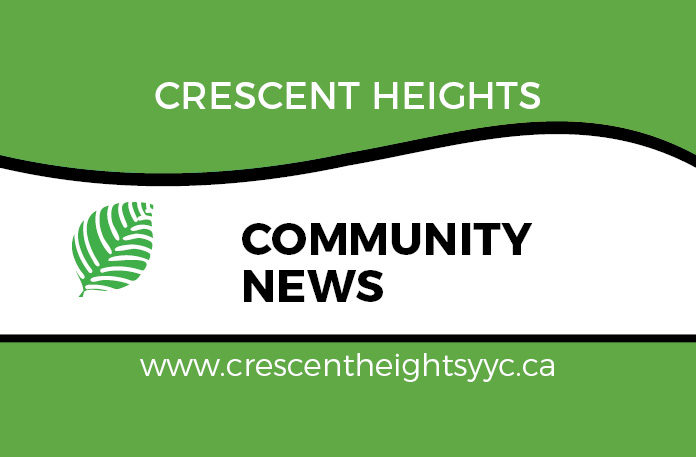Loss of Mature Trees on Private Land in Crescent Heights
by Stephanie Ho Lem, CHCA Director of Living Green
Calgary, the fourth largest city in Canada has a very high rate of homeownership – currently 69%, compared to Vancouver at 57.4%. Furthermore, an estimated 61% live in single-detached or semi-detached houses i.e. those most impacted by the change in zoning.
Increasing Density: A Necessary Response to Urban Growth
Calgary’s population has grown 18% over the past five years, with a 6.14% increase year-over-year. This rapid expansion has created an urgent need for affordable housing and efficient land use. In response, the federal government provided $220 million (housing accelerator fund) to support increased housing across the city, leading to initiatives like blanket rezoning. Rezoning allows for higher-density developments, such as multifamily dwellings, in areas traditionally dominated by single-family homes. This approach aims to address housing shortages, improve affordability, and accommodate a more diverse population. However, the transition comes with its own set of challenges. The tension between densification and the preservation of mature trees in residential areas has taken center stage.
Being a member of the Crescent Heights Community Association Planning Committee, all development permits relating to any developments within the community are sent to the Planning Committee Chair for the committee’s input. Since Council approved the bylaw for blanket rezoning, we are seeing a greater number of development permits for rezoning. For many, residents lament the loss of trees and the aesthetics of the pedestrian-friendly street with front lawns and gardens. They also are concerned about traffic and lack of enough street parking with all the new neighbours.
The Role of Trees in Urban Neighbourhoods
In Crescent Heights, mature trees are more than just aesthetic features of a community. They play a crucial role in urban ecosystems by providing shade, improving air quality, supporting biodiversity, and absorbing carbon dioxide to combat climate change. From a social perspective, trees enhance mental well-being by offering serene green spaces and reducing stress. Streets lined with mature trees also improve the aesthetic appeal of neighbourhoods, fostering a sense of tranquility and connection to nature. Trees provide much-needed cooling shade in warmer months, reducing the urban heat island effect. However, with increased densification through developments such as four-plexes, these ecological and social benefits are under threat.
The Impact on the Loss of Mature Trees
Higher-density developments often require larger lot coverage, leaving less space for green areas and mature trees. The shift from single-family homes to multifamily units has already led to noticeable changes. Front lawns have shrunk or disappeared entirely, and once tree-lined streets are now characterized by buildings squeezed close to sidewalks. According to George Brookman, Chair and Company Ambassador of West Canadian Digital “front lawns are gone or so small that the grass, if it grows, could be trimmed with scissors”.
The Case Against Losing Trees
Critics of blanket rezoning and densification argue that the loss of trees has far-reaching consequences. Beyond their environmental importance, trees contribute to the unique character and livability of neighbourhoods. Their removal often leads to:
• Reduced green spaces: Larger developments leave little room for permeable land, which is critical for stormwater management and maintaining ecological balance.
• Higher temperatures: Fewer trees mean less shade, exacerbating the urban heat island effect and making neighbourhoods less comfortable during summer months.
• Loss of biodiversity: Trees provide habitats for various species, and their removal disrupts local ecosystems.
• Decreased mental well-being: The absence of greenery can negatively impact residents’ mental health, reducing opportunities for relaxation and stress relief.
For many homeowners, the loss of trees also represents a loss of identity and cohesion within their communities. Tree-lined streets and spacious front lawns are visual and cultural markers of Calgary’s suburban neighbourhoods. Their disappearance, coupled with an influx of transient renters in higher-density dwellings, raises concerns about diminished community ties.
Private Tree Conservation Bylaw
Council rejected a motion from Ward 7 Councillor Terry Wong for the city to pursue a private tree conservation bylaw, opting instead to adjust land-use bylaws to incentivize tree preservation. However, critics argue that these measures may not go far enough to protect the city’s green canopy. The absence of a cohesive plan for handling zoning changes, particularly in areas like Crescent Heights, has left many residents feeling uncertain about the future of their neighbourhoods.
Conclusion
The debate over losing trees versus increasing density in residential neighbourhoods is emblematic of broader challenges in urban planning. Calgary’s tree canopy covers 8.25% of the city, including public and private properties. The goal is to expand this coverage to 16%. While densification is essential for population growth and housing shortages, the city must preserve the unique natural and social fabric of Calgary’s neighbourhoods.
Please note that the content provided is for informational purposes.
Sources:
Calgary Herald-Apr/24, Every Day Tourist, The Sprawl, AP News-Understanding Blanket Rezoning
Click here to the Crescent Heights Community News home page for the latest Crescent Heights community updates.










